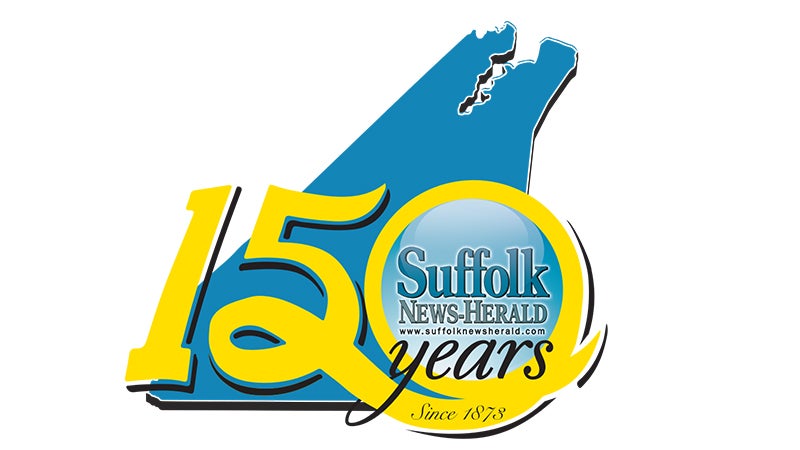Column – Race and Space
Published 4:15 pm Tuesday, May 16, 2023
|
Getting your Trinity Audio player ready...
|
School integration dominated the front pages nationwide. Locally, Virginia passed legislation that allowed for funding of private schools in the case that public schools were closed to avoid integration.
Thousands dropped out of school after the law requiring attendance was repealed. State Sen. Ted Dalton said there were indications that thousands of children dropped out at public schools when the legislature repealed the compulsory attendance law in January.
The senator, Virginia’s top Republican, said repeal of the compulsory attendance law “struck a blow for ignorance.” “It’s not anti-integration legislation — it is anti-education legislation,” he said. Dalton added that if the legislature is not willing to reenact the law on a statewide basis, it at least should give localities the authority to enact local compulsory attendance laws.
Elsewhere, the Alabama Ku Klux Klan tried to rid school libraries of children’s books. “The Rabbits’ Wedding’’ was removed from general circulation after a bitter legislative fight. It is a story about the marriage of a black rabbit and a white rabbit. “Two is a Team,’’ an illustrated tale by Lorraine and Jerrold Beim, tells of a Black boy and a white boy who are playmates. It pictures them visiting each other’s homes and playing with other children of both races. These were among several the Klan fought to ban from schools.
Schools were not the only institution being pressured to integrate.
In March 1960, 75 students were arrested for disorderly conduct after lunch counter demonstrations. Black students and youth staged large demonstrations in three Southern states as part of the campaign for equal rights at eating places.
A couple weeks later, more than 500 Black people were arrested in the largest mass police action since demonstrations against segregated eating facilities in the South began in February 1960. Police in Orangeburg, South Carolina, used tear gas and fire hoses to quell an estimated 1,000 demonstrating students and arrested 350 of them.
On the international stage, the Cold War was heating up quickly. Tensions between the United States and Soviet Union increased steadily through the end of the ’50s and into the beginning of the ’60s. Cuba was a main pawn in the tense power struggle. It was pointed out as a Soviet base. In October 1960, the United States banned all exports to Cuba except certain medical supplies and foods. In preparation for potential war, both the United States and Soviets began long-range rocket tests. Other technology in weapons and surveillance was tested constantly.
Another aspect of the Cold War was the space race. Every week seemed to bring either sky-high achievements or devastating disasters in the space rocket business.
Two monkeys, Baker and Able, rode a U.S. rocket to space and back. Both survived the journey; however, Able died during an operation to remove electrodes after their return.
NASA announced in August 1960 that three men would be aboard the U.S. “Project Apollo” spaceship, which was planned to circle the moon sometime between 1965 and 1970.
On Oct. 5 the United States launched its newest satellite — a veritable chatterbox in the sky. It whipped around the world, paving the way for a space-age communications system for U.S military forces.
The developments in technology weren’t limited to space travel — developments in computers were underway.
Machines capable of learning are on the way, an Army study project said. “The goal, of course, is to make the computer behave more like the human planner,” Julius Brick said. “This is the direction in which computer designers will be heading for some time.”
In 1959, Hawaii became the 50th state. On July 4, 1960, the 50-star flag became official. A large-scale marketing campaign was launched in Suffolk’s downtown area to convince merchants and residents to buy and display new flags for the July 4 holiday.
At the end of 1960, John F. Kennedy was elected president.
Suffolkians have always co-existed with native animals, it would seem. In this case, it was a pole-sitting raccoon. “A raccoon atop a telephone pole had folks downtown in a tizzy this morning until Chesapeake and Potomac Telephone Co. linemen came to the rescue,” the newspaper reported. “How and why the animal got to the top of the pole in front of Brady’s Radio and TV shop on North Saratoga was not known, but he was found there by early risers this morning.
“Mister Raccoon came down with a plop, when first knocked from his perch by the telephone company lineman, but promptly scrambled back to it before he could be caught. But the second time he came down, Army recruiter Sgt. Vera Fowler appeared with a cardboard box, and the night visitor was carted off to the country to climb trees rather than telephone poles.”




